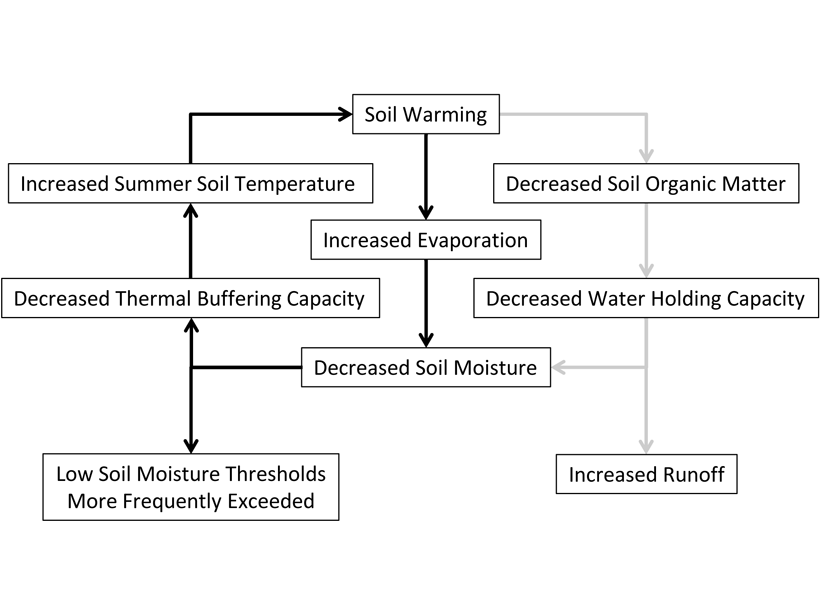Source: Journal of Geophysical Research: Biogeosciences
Heat accelerates: a little heat can cause a big change in the pace at which things proceed. While soil warming has been shown to accelerate soil respiration, leading to eventual reductions in soil carbon, less is known about the long-term effects of warming on how much water soil can hold.
Werner et al. [2020] investigated this by pausing a long-term soil warming experiment at Harvard Forest, a temperate forest in the northeastern United States. They used an interdisciplinary approach to assess the soil’s organic matter content and water-holding capacity.
Even without the warming treatment, they observed that previously warmed plots remained warmer. While warming is expected to increase evaporation from soils directly, the authors show that the long-term effect of warming (reduction of soil carbon via accelerated respiration) reduces the soil water holding capacity. By holding less water, soil’s ability to buffer against future warming is compromised.
As Earth’s climate continues to warm, the combined short-term (increased evaporation) and long-term (reduced water holding capacity) effects of soil warming could intensify the magnitude of future droughts.
Citation: Werner, W. J., Sanderman, J., & Melillo, J. M. [2020]. Decreased soil organic matter in a long‐term soil warming experiment lowers soil water holding capacity and affects soil thermal and hydrological buffering. Journal of Geophysical Research: Biogeosciences, 125, e2019JG005158. https://doi.org/10.1029/2019JG005158
—William M. Hammond, Associate Editor, JGR: Biogeosciences
Text © 2020. The authors. CC BY-NC-ND 3.0
Except where otherwise noted, images are subject to copyright. Any reuse without express permission from the copyright owner is prohibited.

